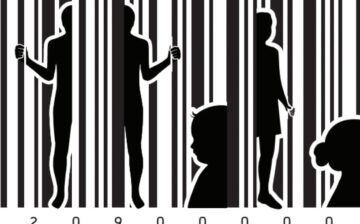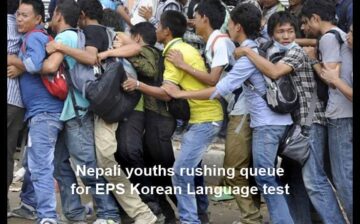Sign up for our news digest
I agree to receive email updates from Human Trafficking Search. I may unsubscribe at any time.
Child Trafficking

Using Technology to Educate on Child Labor: DOL’s New App, Sweat & Toil
Recently the United States Department released the 14th edition of its annual report, the 2014 Findings on the Worst Forms of Child Labor. The report is prepared by the Bureau of International Labor Affairs in accordance with Trade and Development Act (TDA) of 2000 and the Trafficking and Victims Protection Reauthorization Act of 2005. The report documents both the progress made in eliminating child labor globally and also the challenges remaining. The 2014 Findings on the Worst Forms of Child Labor report showed some 60 percent of the 140 countries surveyed with moderate to significant improvement on child labor issues.

Where the Crossroads of Abuse Meet: Domestic Violence and Trafficking
In light of Domestic Violence Awareness Month, it is only fitting to talk about the stark connection between domestic violence and human trafficking. While seemingly two separate issues, domestic violence and trafficking are intertwined more often than not.

Expanding Legal Options for Foreign National Trafficking Victims
Both U.S. Citizens and Foreign Nationals can be victims of human trafficking in the United States. Foreign National victims of human trafficking may sometimes be living within the United States in an undocumented immigration status. To address the particular vulnerabilities of these victims, the Trafficking and Victims Protection Act creates certain immigration protections for foreign national trafficking victims so that they remain legally within the United States.
Nepal’s Earthquakes, ‘Orphans,’ and Volunteers
In the aftermath of the earthquakes in Nepal in April and May, social media was flooded with people raising money for various relief efforts, including children’s care homes, disaster relief operations, and volunteer assistance trips to child orphanages in Nepal. While well intentioned, many failed to realize the true impact their volunteering or donations to children’s care homes post-earthquake might have as child care homes in Nepal come under scrutiny for their possible links to child exploitation and child trafficking.
Refugees and Trafficking: A Dangerous Nexus
The current crisis of Syrian refugees migrating to bordering states and Europe has commanded the attention of the media. From images of 3-year-old Aylan dead on the shores of Turkey to the tables of the European Commission, this issue has become global. However, seldom discussed is the stark connection between trafficking and refugees.
Pope Francis and Human Trafficking
This week, Pope Francis will be visiting the United States and touring Washington D.C., Philadelphia, and New York City. During his time here Pope Francis will be addressing Congress and the United Nations General Assembly. There has been much speculation about what the Pope will say in these remarks and during this trip. Despite the uncertainty about his exact remarks, one thing is for sure: this Pope has dedicated more attention to the discussion of human trafficking than any other Pope or world religious leader before him.

When is youth labor migration actually child trafficking?
The 2008 financial crisis and global recession affected individuals all over the world, but it may have hit global youth the hardest. Youth unemployment rose immediately, hitting 12.7 percent in 2009. When global recovery weakened in 2012 and 2013, it further aggravated the problem of youth unemployment. At the moment, it is estimated that 73 million young people are unemployed worldwide, and youth are three times more likely to be unemployed than adults. And analysts predict that the number unemployed youth will continue to rise.
Anti-Trafficking Activists Fight Against Backpage.com
Last week, anti-trafficking advocates fighting Backpage.com, the classified advertising website that has been accused of facilitating commercial sexual exploitation of children, gained a hard-fought legal victory. In Washington State, the state Supreme Court ruled in a 6-3 decision that Backpage could be held accountable for commercial sexual exploitation in the case of three girls sold on the site. The girls, who were 13 and 15 when they were sold for sex online, will have their claim for damages against Backpage.com move forward in a court of law.
Protecting Unaccompanied Mexican Migrant Child Trafficking Victims
Recently, the United States Government Accountability Office (GAO) released a report regarding the care of unaccompanied migrant children by the Department of Homeland Security (DHS). The GAO report entitled Unaccompanied Alien Children: Actions Needed to Ensure Children Receive Required Care in DHS Custody, found that the U.S. Customs and Border Protection (CBP) agents have not consistently screened unaccompanied Mexican children in their custody for trafficking.
The Intersection of Human Trafficking & Forced Displacement
Today, the number of forcibly displaced people worldwide has reached nearly 60 million, the highest number since World War II. Almost 20 million of these are refugees: people who have fled their country of origin because of persecution based on their race, religion, nationality, political opinion, or membership in a particular social group. Close to 40 million are people displaced within their own country, known as internally displaced persons (IDPs). The Office of the UN High Commissioner for Refugees (UNHCR) – also known as the UN Refugee Agency – protects and assists both refugees and IDPs in over 125 countries. UNHCR also works on behalf of stateless individuals, who are not recognized as citizens of any State.
